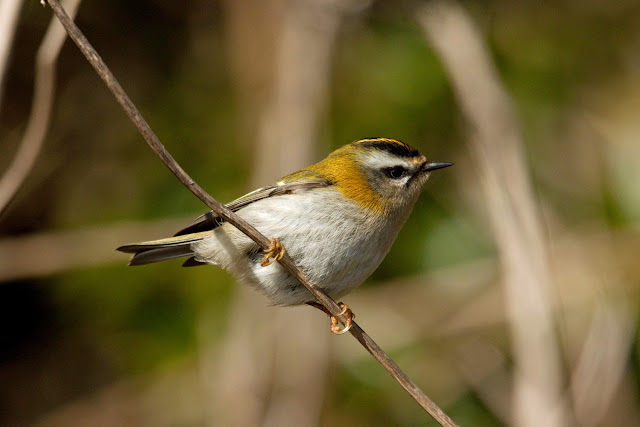The View
Down at more established Cornish seawatching sites such as Pendeen during a decent NW wind you can expect to see a bird every few seconds, but here, I was treated to just 5 Kittiwakes, 12 Gannets and a few Razorbills. Finding your own birds in the empty corner is sometimes very trying!
I had a nice surprise in the form of a smart drake Eider which was patrolling just off the beach. I suspect that this is the bird which turned up as a juvenile three years ago so it's really just re-finding a returning bird, but he was much appreciated all the same.
Hello!
Wherever he's come from we can safely say he's not one of the birds present earlier in the month.
Great Black Backed Gulls were present in some numbers, with around 200 sitting out the storm over on Looe Island. The lee of the island, usually a great place to find sheltering Duck, Grebes and Divers was disappointingly empty.
High tide arrived and an amazing thing happened. The cloud came over, the crowds disappeared and the crashing waves churned up the accumulated weed and attracted hundreds of gulls. OK so they were just the local gulls but the sight of them feeding was fascinating. They were almost exclusively Black-headed and Herring gulls, but that didn't really matter as I was kept busy just trying to photograph them. The poor light and the speed of the birds necessitated upping the ISO to 800 which introduced an element of grain but that couldn't be helped.
A couple of Mediterranean Gulls added a little spice to the group, even though they are now regular at this site.
Even Turnstone numbers had increased, from a paltry seven on the beach earlier to an impressive 42 at the high tide roost.
Having gone through the group numerous times and satisfying myself that I hadn't overlooked that elusive Sabine's Gull I decided to check just down the coast at Seaton where I knew there was a regular high tide roost. Here I found more of the same - Black-headed and Herring Gulls with a single Med amongst them, but this time there was also a splendid Little Gull dipping in and out amongst the waves, and far too far out to get anykind of photo. C'est la vie!!

























